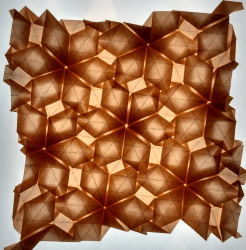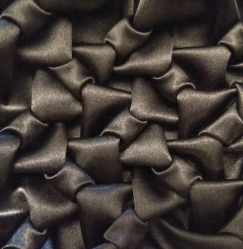Tessellations and Modular Origami From Fabric and Paper
You may be familiar with origami, the Japanese art of paper folding, but chances are you haven’t come across smocking. This technique refers to the way fabric can be bunched by stitches, often made in a grid-like pattern to create more organized designs. Often, smocking is done with soft fabrics, and you may have even noticed it done on silk blouses and cotton shirts. There are plenty of examples of 18th and 19th century paintings depicting smocking in fashion.
[Madonna Yoder], an origami enthusiast, has documented her explorations in origami tessellations and smocking, including geometric shapes folded from a single sheet of paper and fabric smocked weave patterns. Apart from flat patterns, she has also made chain-linked smocked scarves stitched into a circular pattern and several examples of origami tessellations transferred to fabric smocking. Similar to folds in origami, the stitches used aren’t complex. Rather, the crease pattern defines the final shape once the stitches and fabric are properly gathered together.



What’s the similarity between the two art forms? On the surface, it seems as though they concern entirely different disciplines – one features designs folded from paper while the other deals with stitching fabric. However, when it comes to modular origami and creating tessellations, there’s plenty of overlap.
Both art forms rely on precision to create the exact angles that produce the patterns, but it’s a bit more noticeable on the puffy smocking piecess if precision has gone awry.
If you’re interested in creating some smocking patterns of your own, there are plenty of tutorials to follow such as this honeycomb smocking tutorial.
from Hackaday https://ift.tt/3apbPsY
via IFTTT